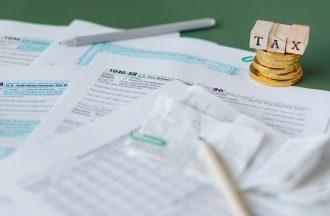
For many in the United States, the American dream is alive and well. However, it may not be as easy to obtain as it once was. Today, those that decide to start their own business will typically fall into the self-employed category. While this has a handful of benefits, it also comes with several downsides. If you intend to work as a self-employed citizen, you’ll need to learn more about your tax obligations, so you do not fall into trouble with the IRS. Below, you will learn more about being self-employed and the tax repercussions of choosing this status.
What Is Self-Employment?
First and foremost, you should familiarize yourself with the self-employment filing status. Someone that earns a living by doing something on their own is typically considered self-employed. Self-employment is classified as earning a living using your own money and while utilizing your own knowledge. Self-employment in many cases can be risky, but it can also be very rewarding. Plus, you’ll have to take additional steps to ensure your tax obligations are paid on time each and every year.
Two Taxes In One
One thing to remember is that the self-employment tax is actually two taxes in one. It includes a Social Security tax and a Medicare tax. Generally, these are handled by the employer. However, since you’re employed by yourself, you’ll be responsible for ensuring these taxes are paid. In order to do so, you will need to fill out the Schedule SE or Form 1040. Also, remember that the self-employment tax has to be paid, if you’ve earned more than 400 dollars from your self-employment income.
Understanding The Totals
Unfortunately, the self-employment taxes can be substantial. The Medicare portion attributes to a 2.9% tax. The social security tax is far bigger. It requires the self-employed individual to pay a 12.4% tax. There is also a possibility that you’ll be required to pay an additional Medicare tax. This is generally designated for individuals that make more than 125,000 dollars as a single individual. If you’re married and filing a joint return, you can make 250,000 dollars before being forced to pay the additional taxes.
Numerous Deductions
While the above information can make it painful to be self-employed, there is some good news. You’ll have plenty of deductions to use to help reduce the amount of taxes you’re forced to pay. One of the biggest is the home office deduction. If you use a portion of your home as an office consistently, you can claim this on your taxes. Be very careful when using this deduction, because it often receives more attention from the IRS and could result in an audit. Simultaneously, you may be able to use medical costs and the costs of an attorney as deductions.
Remain Consistent
As a self-employed individual, paying your taxes can be a major hassle. With this in mind, it is generally a good idea to keep records. Each month, you should calculate your income and expenses. This will give you a big head start when tax season finally rolls around.








